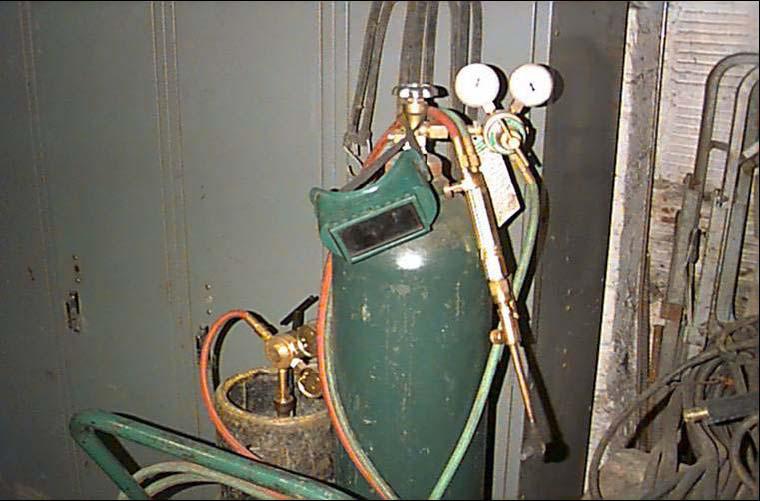CUTTING TORCH SAFETY
The Safe Use and Handling of OXY FUEL Cutting, Welding, and Heating equipment
"Take that lighter out of your pocket "
Oxy Fuel Cutting Torch Safety
Disclaimer: This information, while well researched and believed to be accurate, is for informational purposes only. Weldingtipsandtricks.com accepts no responsibility for anything that happens as a result of your use of oxy fuel cutting torch equipment.
…this is for information only and not to be used as a substitute for manufacturer’s instructions for the equipment in use. Since all oxy fuel equipment is slightly different, manufacturer’s guidelines are the recommended best practice.
Introduction …
Safe operation for the use of gas cutting, heating and welding requires a clear understanding of oxy fuel cutting torch equipment and the fundamentals of combustion.
But lets cut through all the Bullshit shall we?
An Oxy fuel cutting torch can kill your Ass! plain and simple.
Its probably the most dangerous piece of welding equipment there is.
Once you really learn all about it, you wonder how it is that you dont read about deaths everyday in the paper from oxy fuel cutting torch accidents.
OSHA's own data estimates that the risk of death for users of oxy fuel equipment is 4 in a thousand over a working lifetime. WHAT??
That's a lot if you are one of the 4.
Now that we have that out of the way, lets talk about how we can use a cutting torch safely to keep from being one of the 4 in a thousand.

"Talk about useful...heating, cutting, welding , brazing, soldering "
To keep this page from being really long, I broke this thing down into 7 sections, you can click on each link below to go to each page.
There will be a link at the end of each of these pages that takes you to the next oxy fuel safety topic.
• SECTION 1. Understanding the fundamentals of combustion
• SECTION 2. Proper handling of compressed gas cylinders.
• SECTION 3. Oxy-Fuel gas characteristics
• SECTION 4. The burning process
• SECTION 5. Proper operation of oxy-fuel heating tips
• SECTION 6. Oxy-fuel Equipment inspection
• SECTION 7. Oxy fuel Safety torch - tips
Setup and Shut down procedures for using an oxygen acetylene cutting torch
Before you start ... let's see how well you Test on Questions Regarding the Safe Use and Handling of Mixed Gas Cutting, Welding and Heating equipment
1. What three elements must be present to support combustion?
2. Does oxygen burn?
3. What two characteristics does oxygen contribute, relative to ignition point of a combustible and to rate of combustion?
4. Why must compressed gas cylinders always be secured when stored as well as when in use? What is the typical pressure of an oxygen cylinder?
5. What is the maximum safe regulator pressure for acetylene use?
6. What are the reasons that a regulator can be burned out?
7. Why is it important to know gas consumption rates of cutting or heating tips, and why is it important to know the withdrawal rate of a cylinder?
8. What is the danger of applying heat directly to concrete, and why?
9. What is the danger if using a heating tip in a very confined area?
10. What are two safety devices that can be used on an oxy-fuel system; what is the difference between them; and, why should they be checked periodically?
11. Why is it important that the oxygen orifice in a cutting tip be clean and smooth?
12. Explain the correct process to set a heating tip for proper operation.
13. What is the difference between an oxidizing, a neutral and a carburizing (reducing) flame?
14. Why should the adjusting screw on a regulator be left in the off or out position at the end of shift?
15. What is a flashback and what can cause this condition?
16. What is the function of the mixer in an oxy-fuel torch, and does it make any difference what fuel gas is used in a torch?
17. Oxyfuel safety means keeping you safe from injury, as well as a responsibility to operate safely so that coworkers remain safe. What are situations in which your operation with oxy-fuel equipment could endanger your coworkers?
How to set up and shut down an oxy fuel cutting torch rig
converting your oxy-fuel cutting torch to propylene















